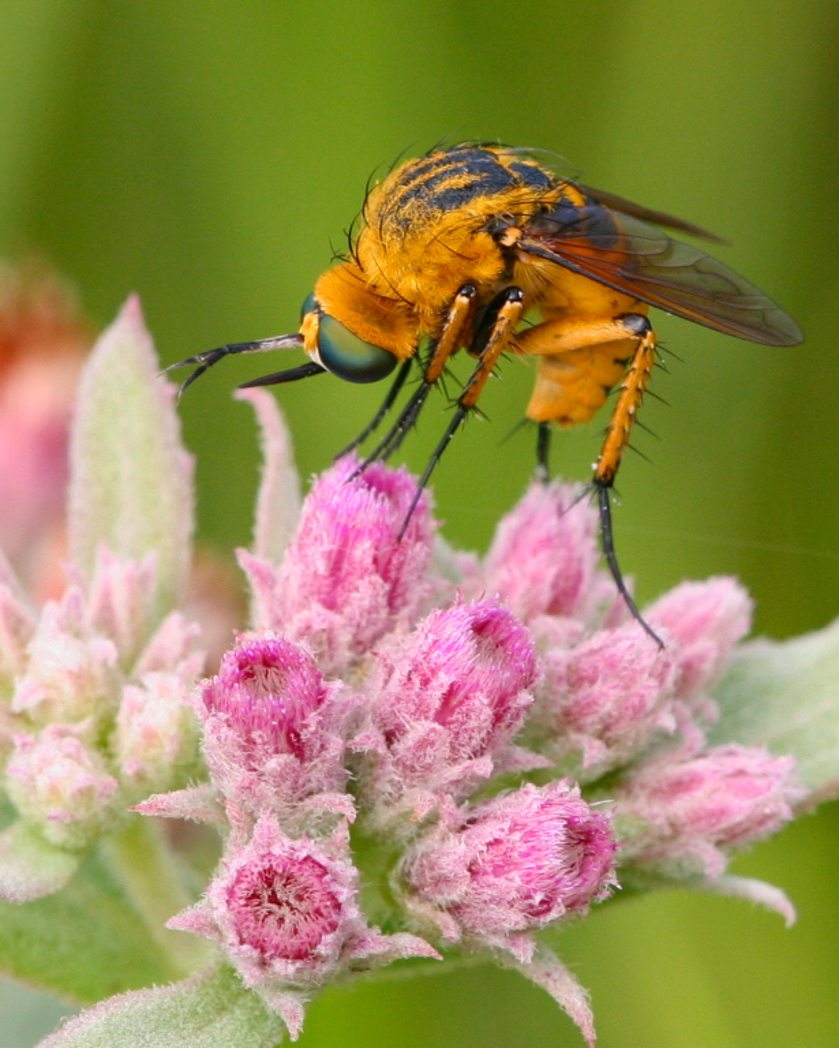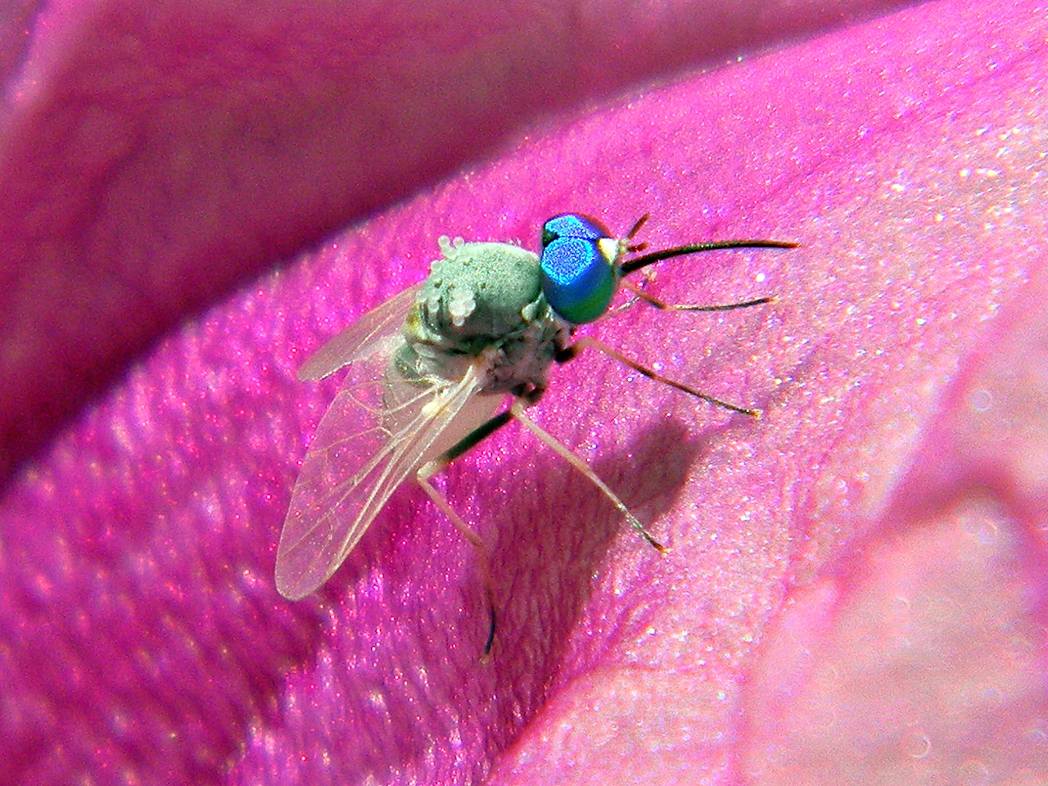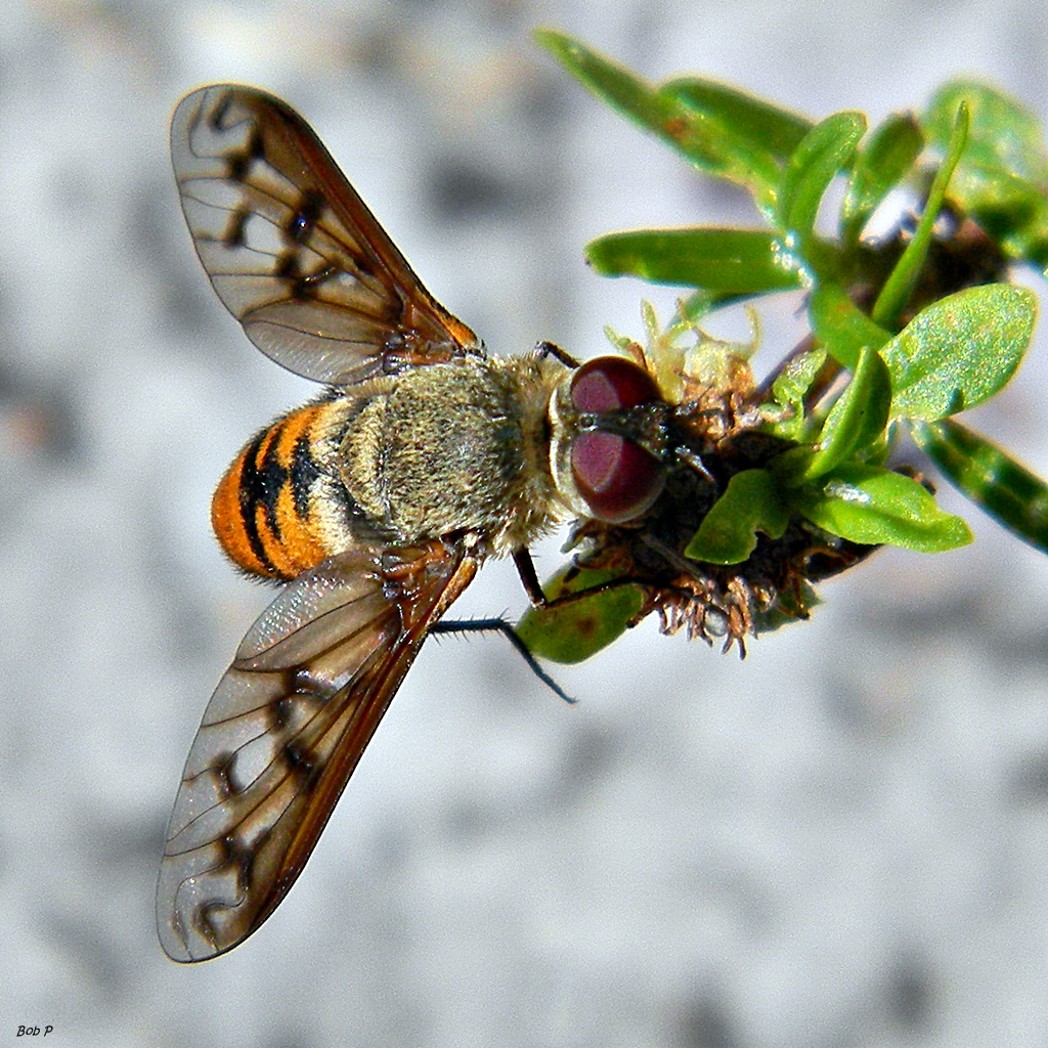Bee fly
“Know your native pollinators” is a series of articles that will help you identify and appreciate Florida’s varied pollinators, including bees, wasps, butterflies, moths, beetles, flies, birds and bats. Pictured above: Bee Fly (Bombyliidae family) by Bob Peterson.
Bee flies, the common name for members of the Bombyliidae family, are true flies that imitate bees to scare predators away. They do not actually have stingers and won’t hurt you, but they will help your native garden grow!
CLASSIFICATION
Class: Insecta
Order: Diptera
Family: Bombyliidae
IDENTIFICATION
The Bombyliidae family is large and diverse. Members are hairy and may be pudgy like a bumble bee or hunched with a long proboscis like a fuzzy mosquito. They are often stout and brightly colored, but many are dark and speckled. Their legs are slender. Wings usually have dark markings and are held at a 45º angle when at rest, forming a triangle. The wingspan is 0.25 – 1.75 inches. To distinguish these flies from bees, look for the single pair of wings on the flies versus the double wing pair that bees have. Bee flies also have short antennae and large compound “fly” eyes close to each other. These flies are excellent at hovering and can frequently be observed hovering and buzzing above the ground.
Common genera of Bee fly found in Florida are Toxophora (pictured on the right) Poecilognathus, Tmemophlebia (pictured below), Xenox, and Villa. Flies in the Villa genus have small, black bodies. Some have yellow stripes on their abdomen and thorax along with yellow hairs along their sides.

FORAGING PREFERENCES
Adult bee flies nectar and collect pollen at the same flowers as mining bees (family Andrenidae) do, with a special interest in composites. Flowers they visit most include Dune sunflower (Helianthus debilis), Elliott’s aster (Symphyotrichum elliottii), Stokes’ aster (Stokesia leavis) and Black-eyed Susan (Rudbeckia hirta). Bee flies often hover over the flower without landing in order to avoid predators. They visit flowers so frequently and have such fuzzy bodies for pollen to stick to, they might even be better pollinators than some bees!
HABITAT
Bee flies are common in the northern hemisphere throughout North America, Europe and Asia. They like dry areas and can be found in fields, gardens and prairies.

LIFE CYCLE
Bee fly larvae are parasitic, feeding on host eggs or larvae of beetles, moths, flies, bees and wasps, as well as other parasitic insects. The female bee fly drops her eggs off in a host’s nest cavity, often flinging the eggs down. She also leaves some pollen for the larvae to eat when they first hatch. Bee flies go through hypermetamorphosis, which means at least one of the larval stages distinctly differs from the others. In the case of the bee fly, the first stage is active. After consuming the pollen provision, the bee fly larvae will find the host eggs or host larvae and attach themselves. The next stage is sedentary. They spend their remaining larval stages preying on the hosts until they pupate. The pupae have spines that they use to drill out of the nest, where they then develop into a mature winged adult.
References:

